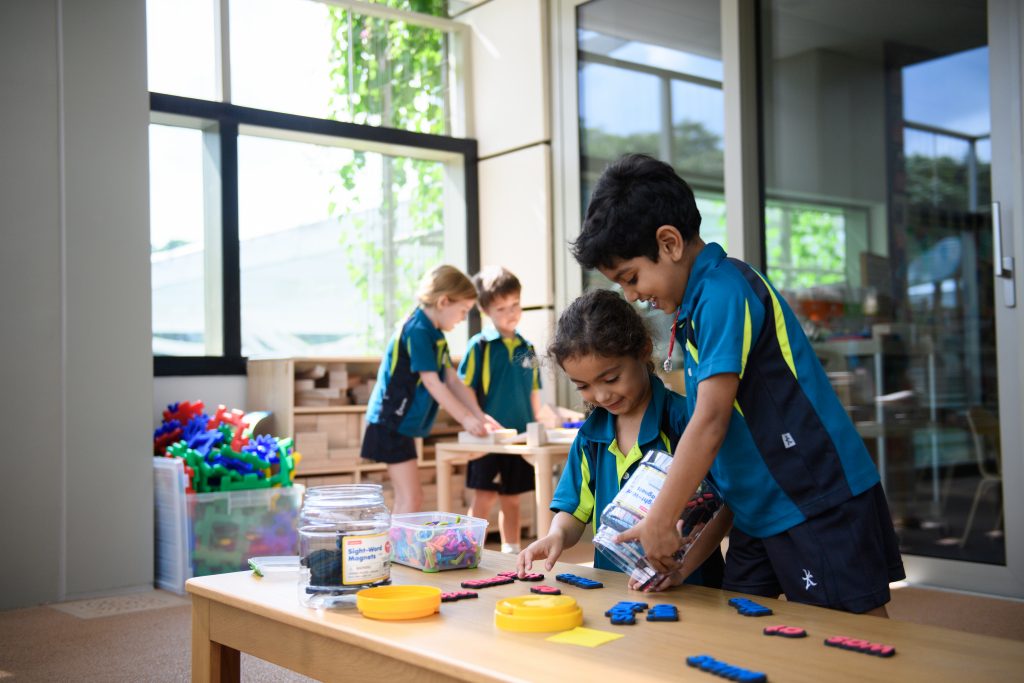 The English language is one of the most widely spoken and written languages in the world, but for young children who are learning to spell it can be challenging to navigate the complex minefield of silent letters, rules and anomalies. As adults, we all remember learning to spell at school – memorising word formations in preparation for the dreaded Friday afternoon spelling test. “I before E except after C” was drilled into us, along with many other baffling rules that still make little sense to us.
The English language is one of the most widely spoken and written languages in the world, but for young children who are learning to spell it can be challenging to navigate the complex minefield of silent letters, rules and anomalies. As adults, we all remember learning to spell at school – memorising word formations in preparation for the dreaded Friday afternoon spelling test. “I before E except after C” was drilled into us, along with many other baffling rules that still make little sense to us.
At the Australian International School, we take a more collaborative approach to spelling, by evaluating each child’s individual learning style and providing differentiated teaching methods to ensure they learn in a way that is best suited to them. Our Assistant Head of Elementary School – Amy Paul, talks us through the spelling teaching methods used in our classrooms…
Tailored Learning To Meet The Needs Of Every Child
Spelling is taught in stages and each child works through these stages at a different pace. Becoming a competent speller takes time and it’s important that we don’t place too much expectation on children to reach certain milestones at certain ages. At AIS we understand that every child is unique, which is why we assess all of our students individually to determine their competency, and we tailor spelling exercises that are appropriate to their skill level.
In the early stages of learning to spell, we focus on phonics and mastering the different sounds of the English language. There are 44 different sounds in the English language and it can take time to become familiar with all of them, particularly for those students who are transitioning from a non-English speaking environment. Children are encouraged to repeat what they hear, and we use songs and rhymes to build phonemic awareness.
Once the phonics have been mastered, we move on to looking at how letters and sounds can be combined to make words. Using their knowledge of phonics, we break words down into sounds, prompting children to identify the sounds they hear at the beginning, middle and end of a word. We encourage them to look for patterns and identify combinations of letters that make one sound (e.g. ch, sh, all, ate, tion.) and to sort and categorise individual words based on the letter and sound patterns they observe.

An Inquiry-Based Approach To Build Confidence And Curiosity
The AIS Elementary School curriculum follows the framework of the International Baccalaureate Primary Years Program (PYP) which encourages inquiry and student-led thinking. We apply these principals when teaching spelling, by encouraging children to ‘have a go’ at spelling unknown words and exploring alternatives rather than pointing out errors when they get it wrong. This builds confidence and ensures children do not develop a fear of making mistakes.
We avoid teaching rules when it comes to spelling – we understand that children need explicit instruction in some instances, but we always try and balance this with an authentic application of the skills learnt. Children are given the opportunity to sort words according to their own observations, and they are encouraged to discuss the patterns they have identified with their teachers and fellow students. We develop children’s curiosity by talking about new words and their meaning, leading to discussions on how these words might be spelled.

Developing Spelling Skills At Home
There are many ways that parents can support children with their spellings at home, and none of these involve spelling tests! Spelling and reading go hand in hand, so it’s important to read with your child regularly at home and discuss words you notice that have the same patterns. Use old newspapers and magazines for word finding games, for example highlighting every word that ends with ‘ing’ or starts with ‘ph’. It’s also helpful to keep a dictionary in the house, or make use of an online dictionary to confirm the spelling or definition of unknown words.
Word games such as Boggle, Scrabble and Hangman can be great for developing vocabulary and spelling skills – try building these into your family nights as a way of having fun together and learning along the way. Another fun way to teach spelling is through the use of letter fridge magnets, which can be picked up in almost any toy store. Form a word with the magnets, then either take some letters out or scramble them around and ask your child to unscramble it.
Find out more about our Elementary School here.








